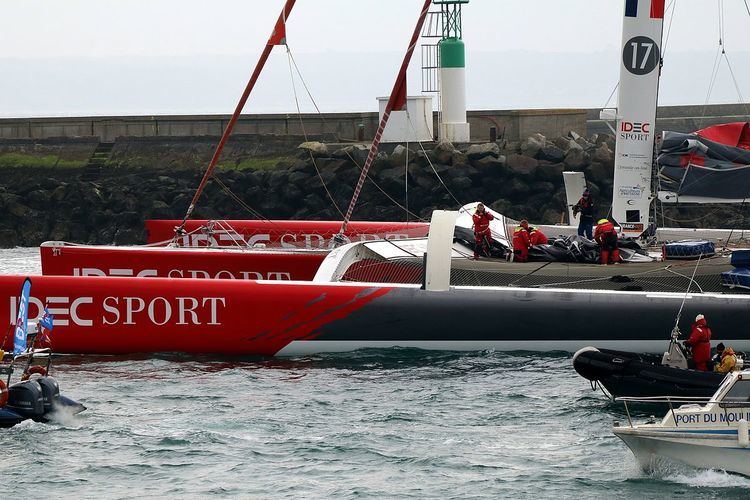 | ||
The first around the world sailing record for circumnavigation of the world was Juan Sebastián Elcano and the remaining members of Ferdinand Magellan's crew who completed their journey in 1522. The first solo record was set by Joshua Slocum in the Spray (1898).
Contents
- Westward route
- Crewed
- Single handed
- Intermediate records
- From Equator to Equator
- Indian ocean
- Pacific ocean
- South Atlantic ocean
- From Cape Horn to Equator out of WSSRC rules
- References
Most races or solo attempts start from Europe. Due to the configuration of the continents, sailing around the world consists in sailing on the Southern Ocean around the Antarctica continent, passing south of Cape Horn, Cape of Good Hope and Cape Leeuwin. Since 1918 the Panama Canal is an option but the locks must be entered and exited using engine power. Large stretches of the canal can be crossed under sail power.
Sailing around the world can be done by two directions: eastward or westward. The dominant winds and currents (outside tropical areas) make the voyage eastwards on the Southern hemisphere faster, most skippers and yachts who race prefer this route. Today, the multihulls perform much better than monohulls and hold the best times. Leisure yacht skippers who prefer tropical seas more often go westward, using the Trade winds (and the Panama canal).
The most famous races around the world are:
Former races including:
The Jules Verne Trophy is awarded to the skipper who breaks the outright record, starting from an imaginary line between the Créac'h lighthouse on Ouessant (Ushant) Island, France, and the Lizard Lighthouse, UK.
The records are homologated by the World Sailing Speed Record Council (WSSRC).
According to the WSSRC, for around the world sailing records, there is a rule saying that the length must be at least 21,600 nmi calculated along the shortest possible track from the starting port and back that does not cross land and does not go below 63°S. The great-circle distance formulas are to be used, assuming that the great circle length is 21,600 nmi. It is allowed to have one single waypoint to lengthen the calculated track. The equator must be crossed. In reality, this means that the boat should pass a waypoint at or not far from the antipode of the starting port of the journey (the exact position depends on how short the shortest possible track is). For example, the Vendée Globe starts at 46°N 2°W, has a waypoint at 57°S 180°E, and barely makes the distance requirement. The participants don't have to go to the antipode at 46°S 178°E since the rounding of Africa gives extra distance.
Westward route
This route is the more demanding one, as it faces the dominant winds and currents. There are fewer attempts and records.
Crewed
As of February 2010, no record has been homologated.
Single-handed
In May 2006, Dee Caffari became the first woman to sail around the world alone non-stop and single-handed westward on the Monohull Aviva, in 178 days.
Intermediate records
The rules for intermediate records are set by the WSSRC.
From Equator to Equator
From the Atlantic Ocean: Equator => Cape Agulhas (South Africa) => Around Antarctica => Cape Horn => Equator
Indian ocean
from Cape Agulhas, South Africa (longitude 20°E) to Tasmania south point, (longitude : 146°49'E)
Pacific ocean
Tasmania south point, (longitude : 146°49'E) to Cape Horn (longitude 67°16'W)
South Atlantic ocean
From Cape Horn (longitude 67°16'W) to Cape Agulhas, South Africa (longitude 20°E)
From Cape Horn to Equator (out of WSSRC rules)
From the cape Horn, cutting the longitude 67°16'W, up to the Equator
